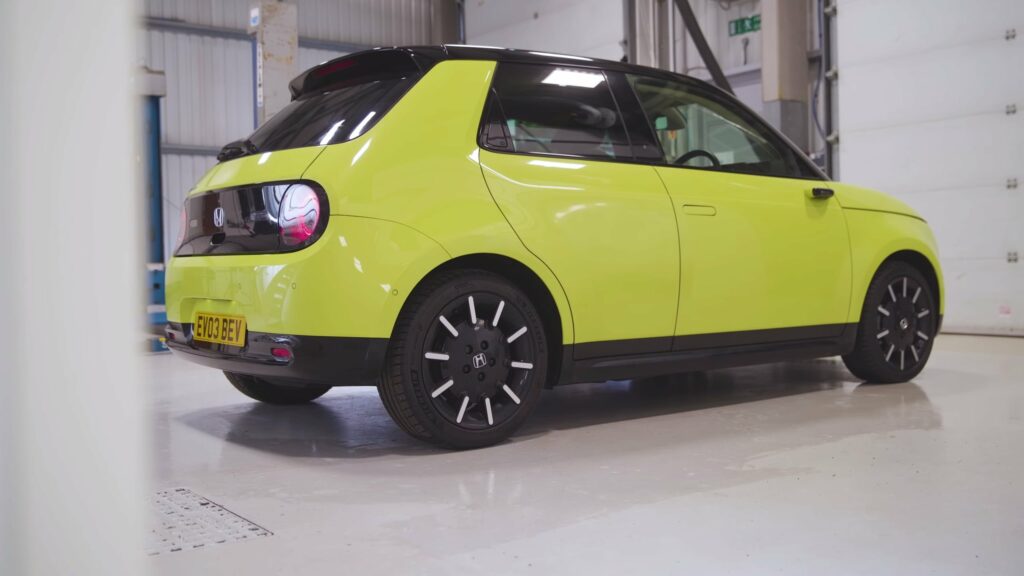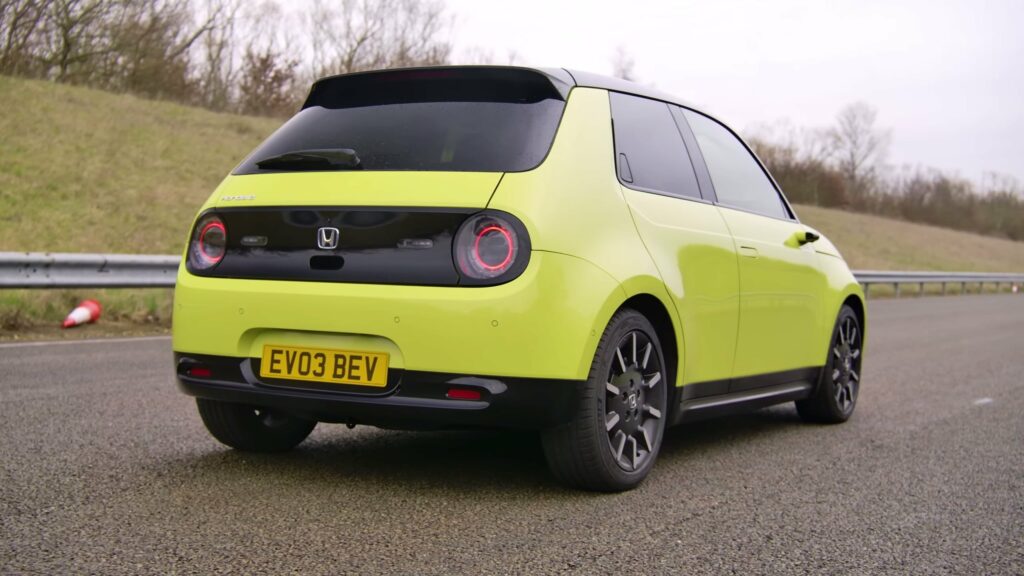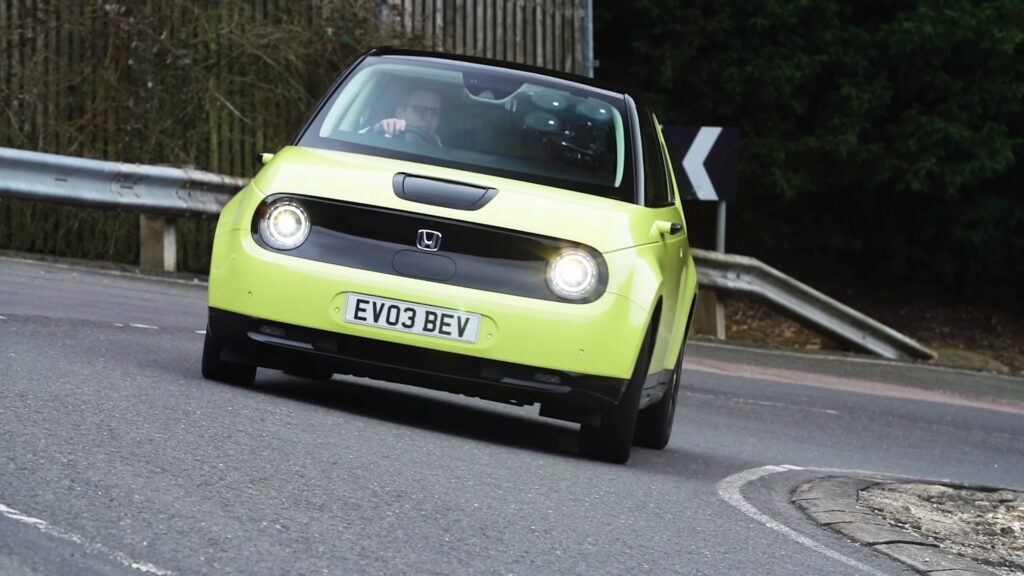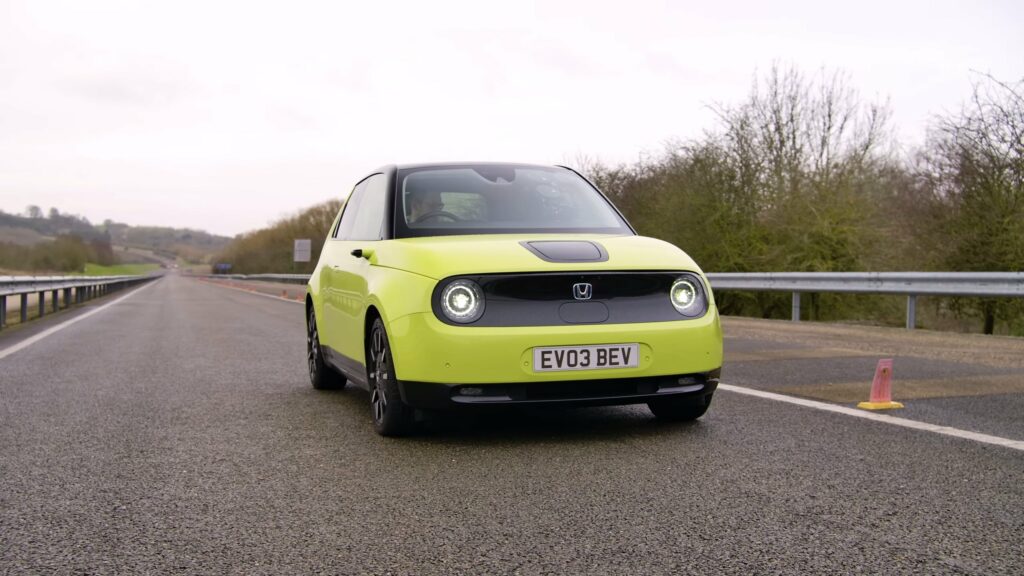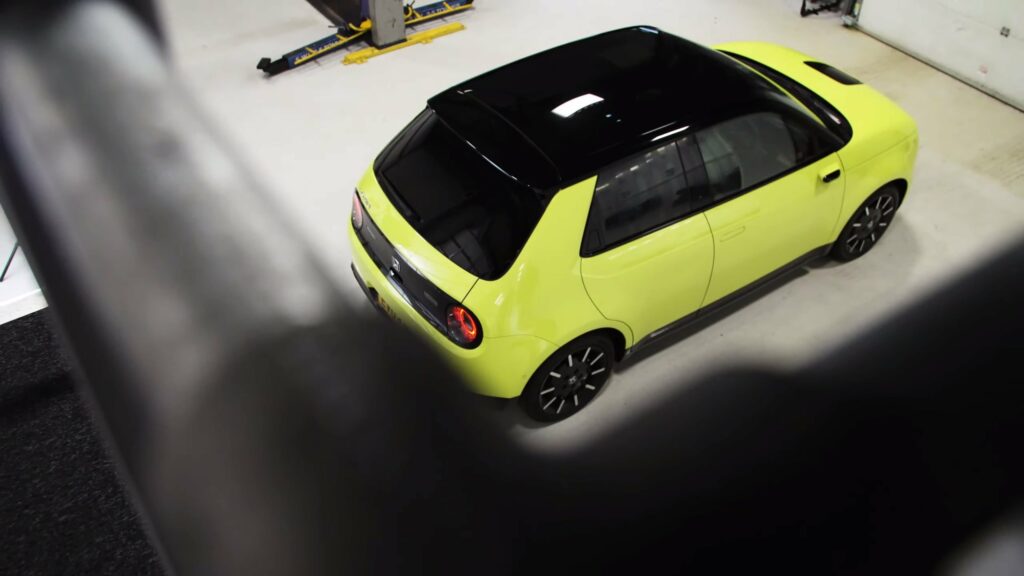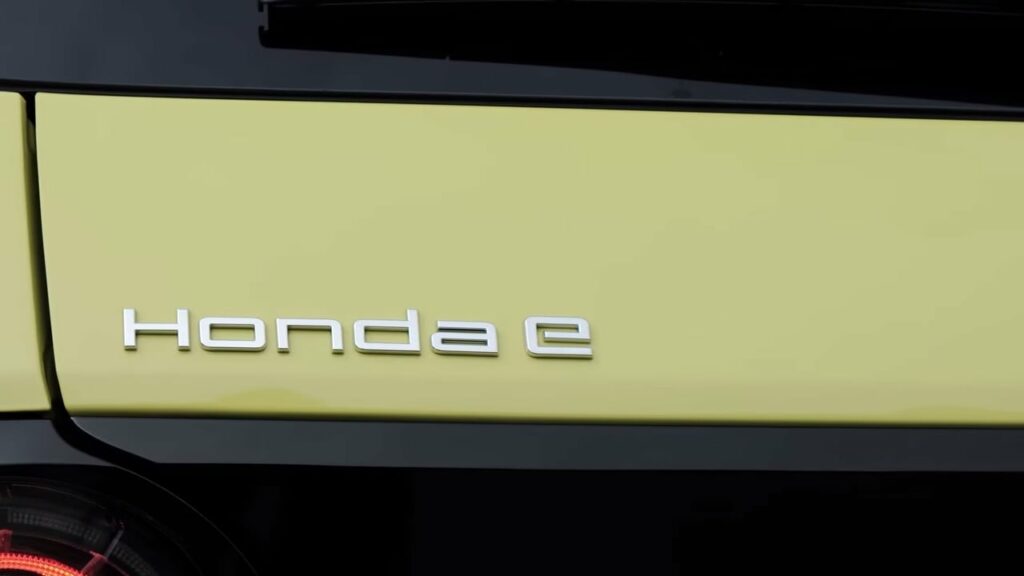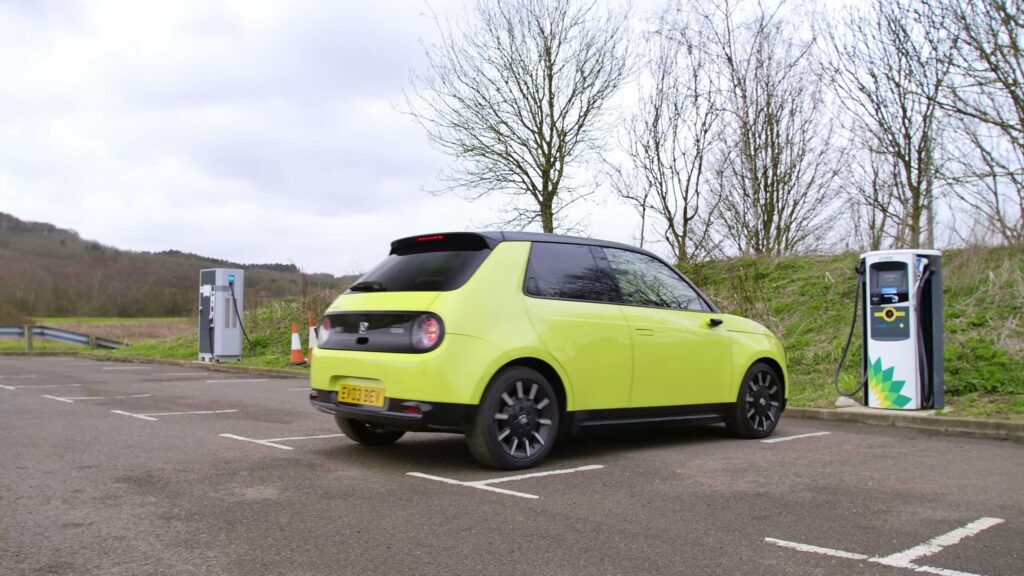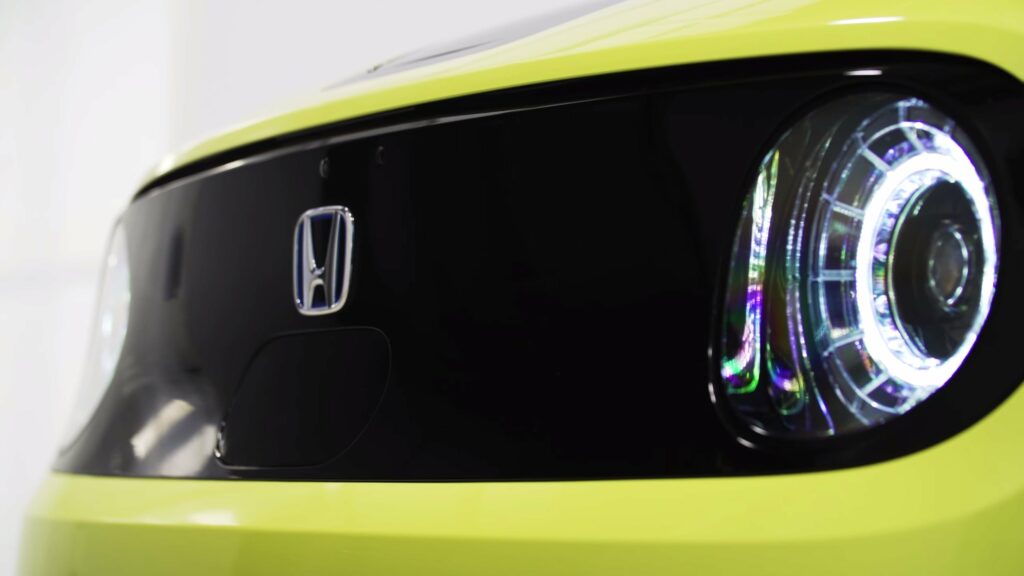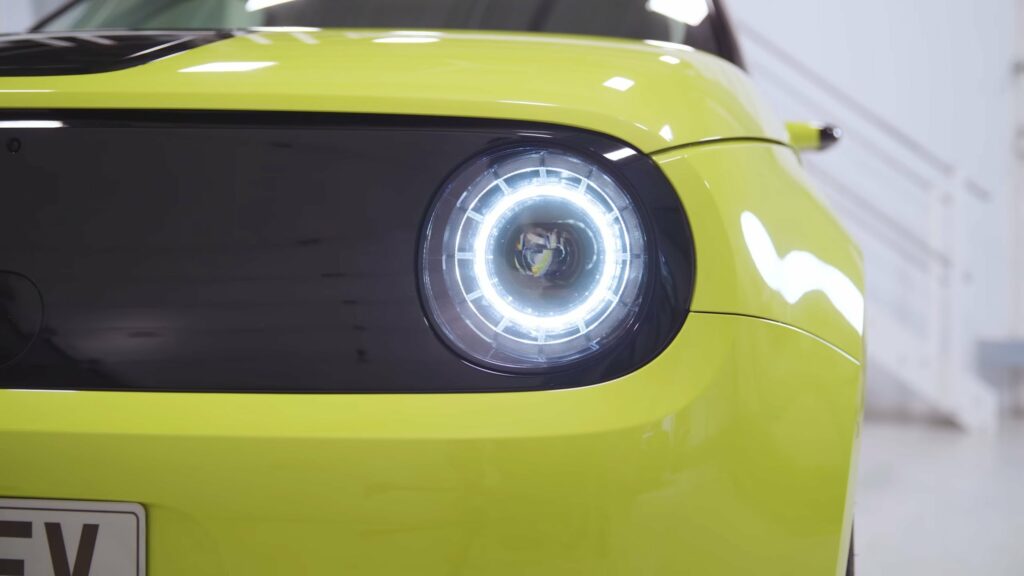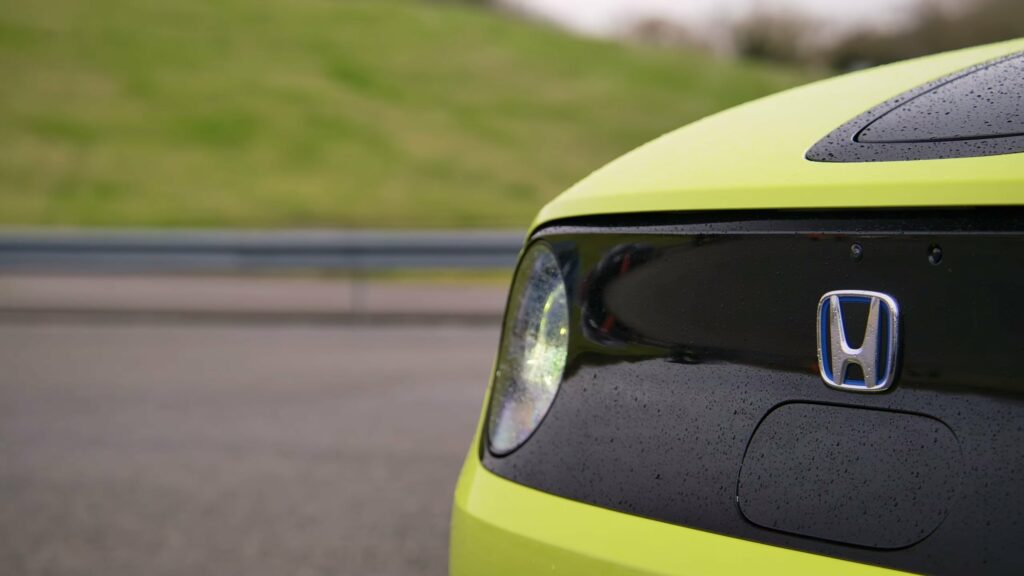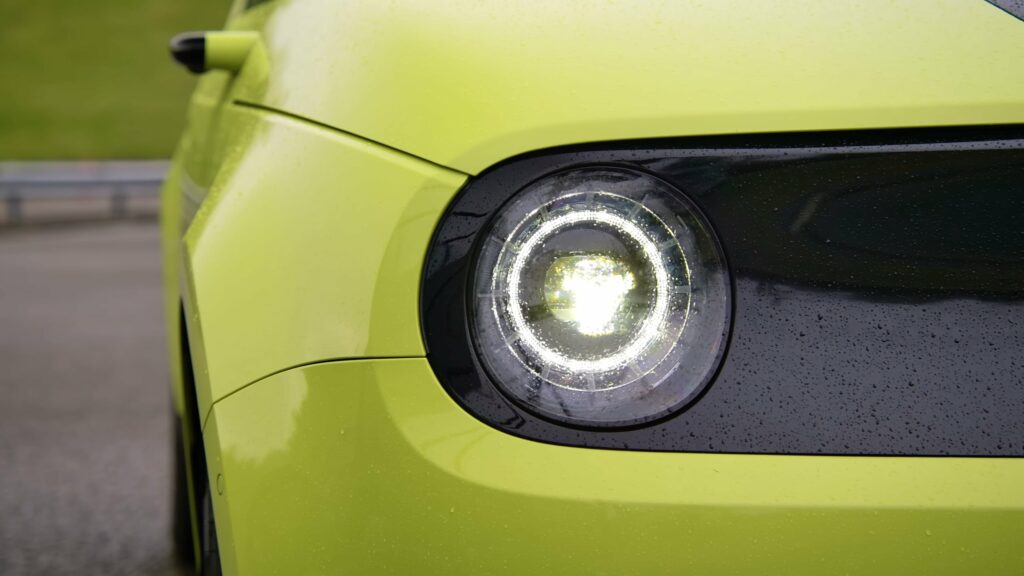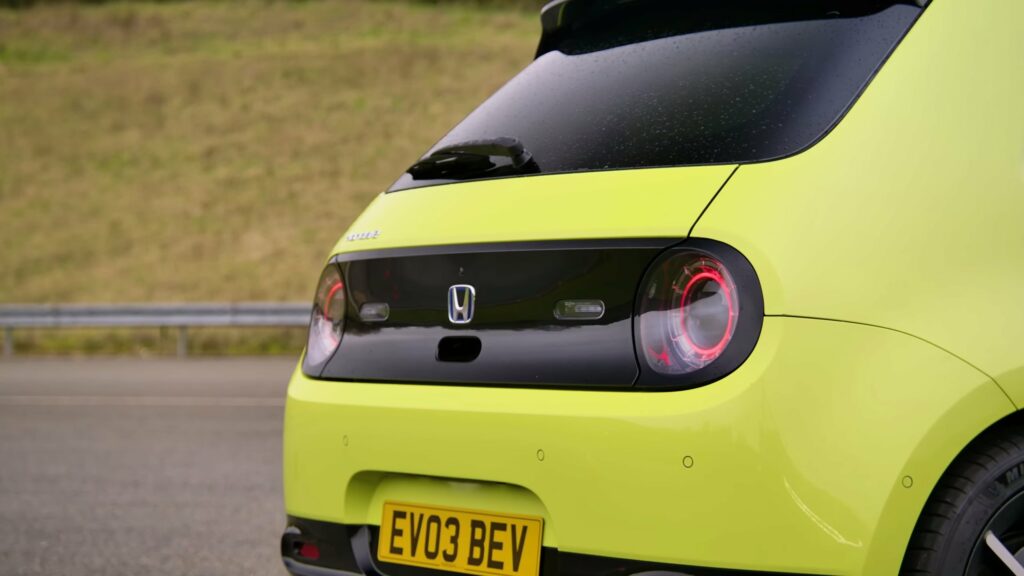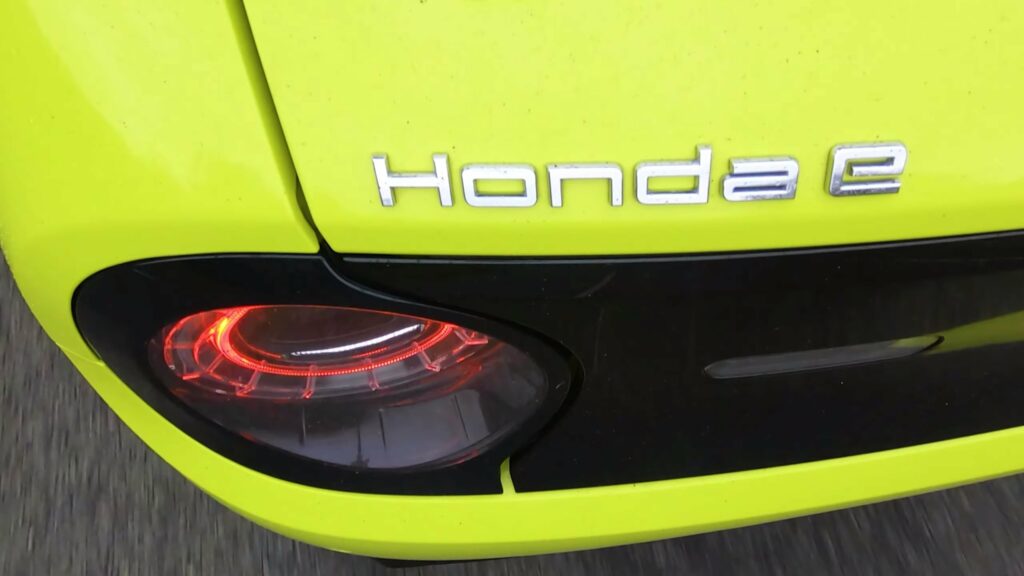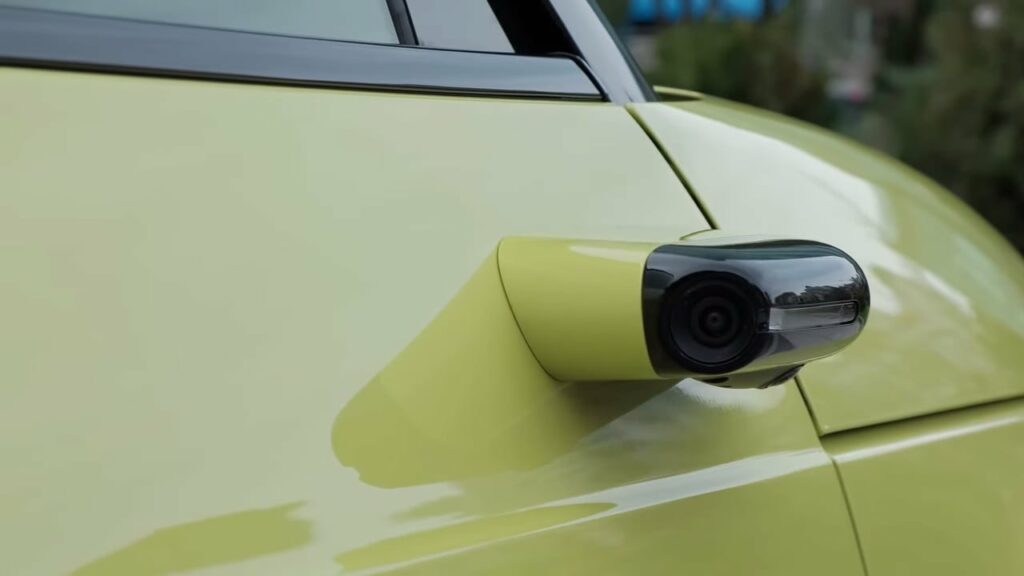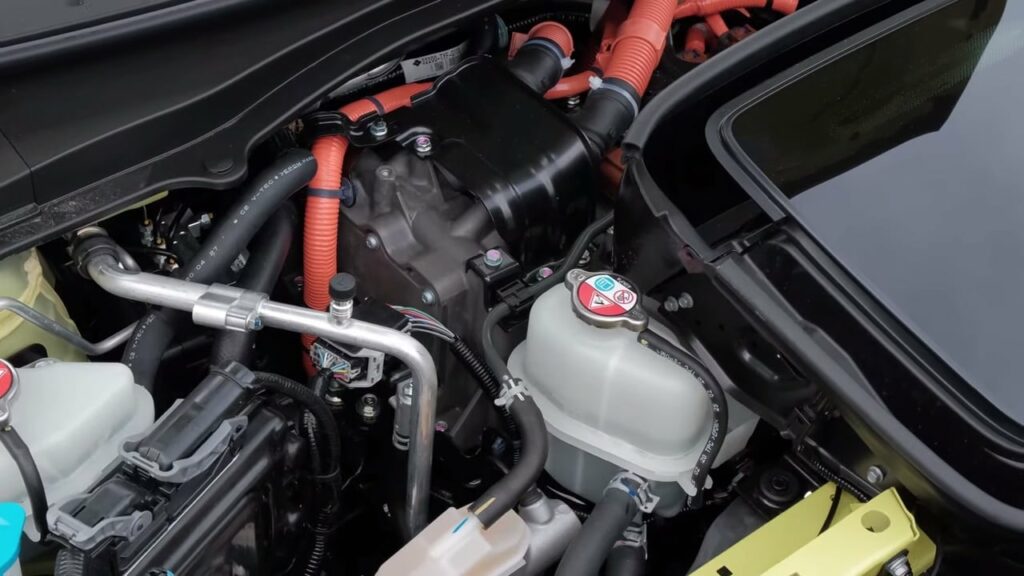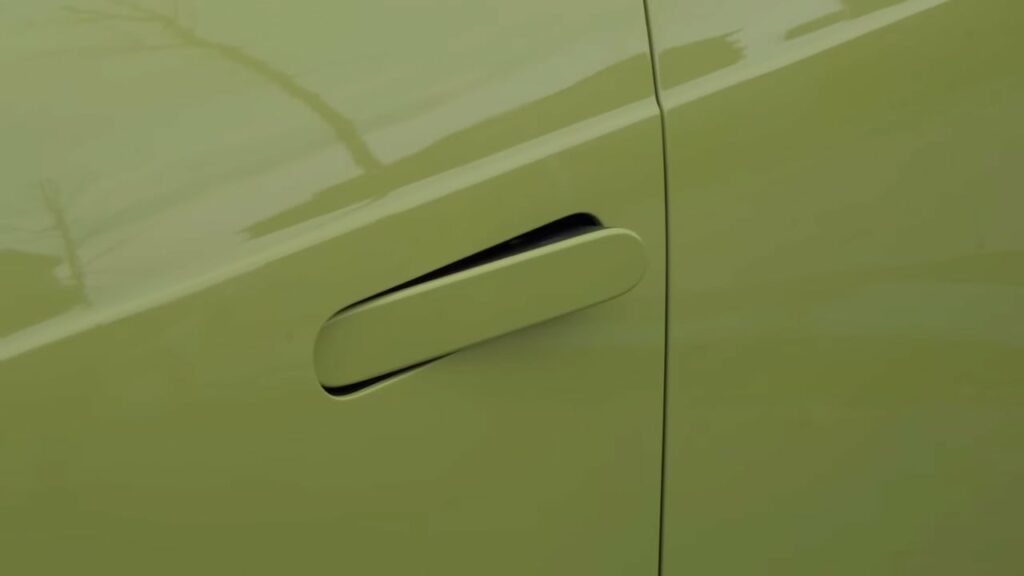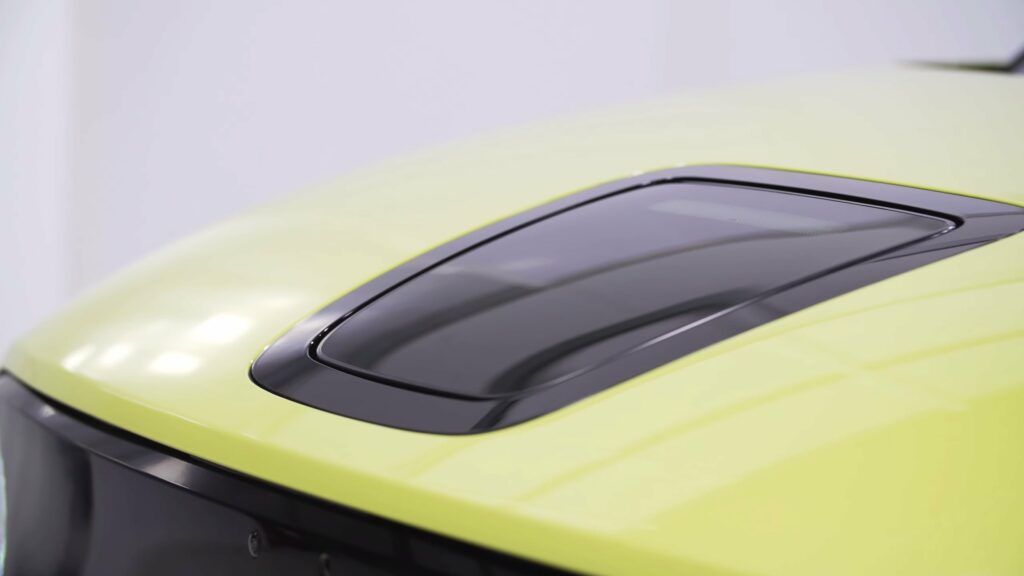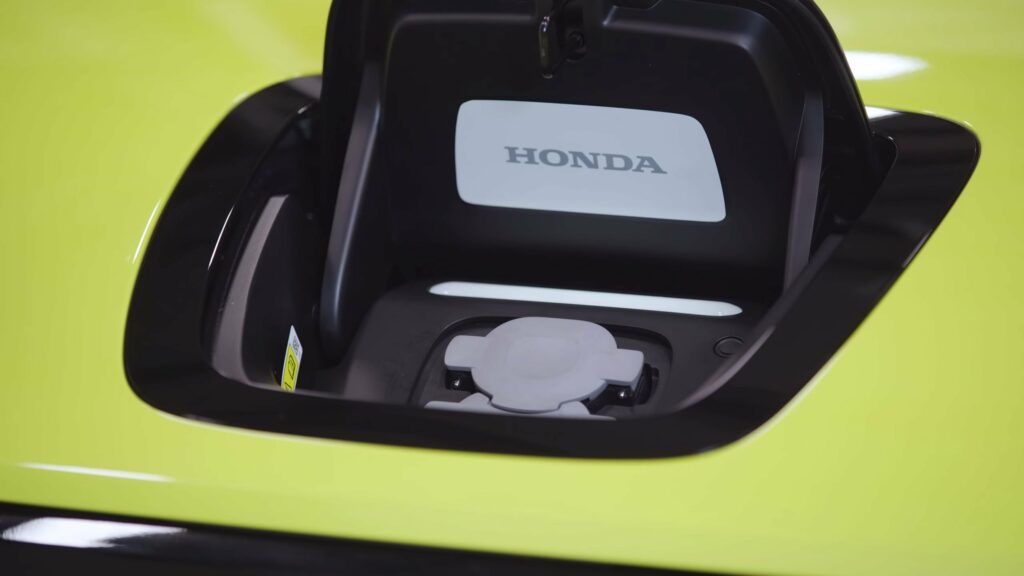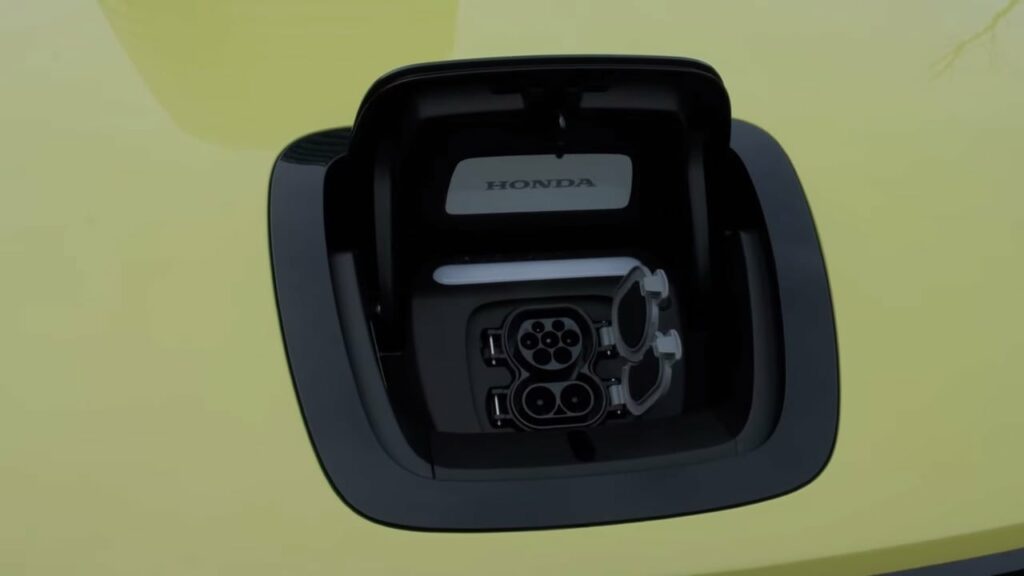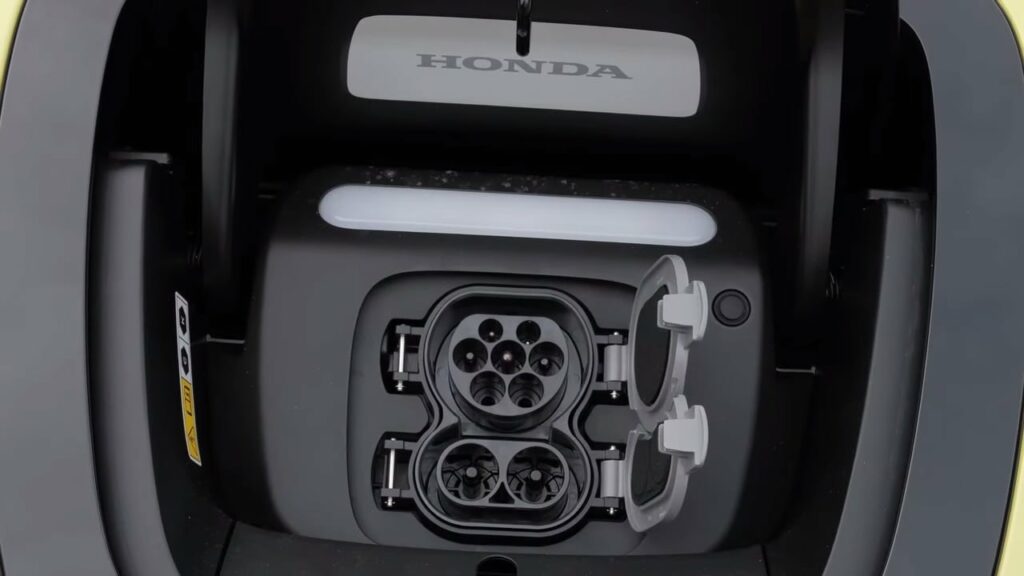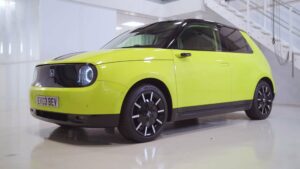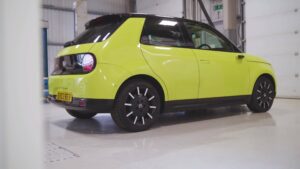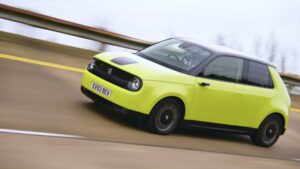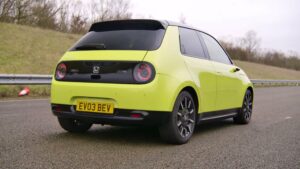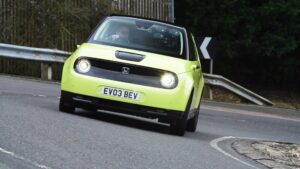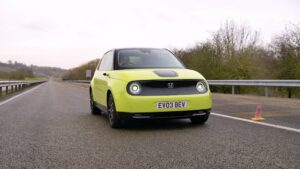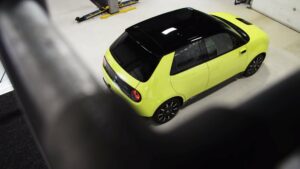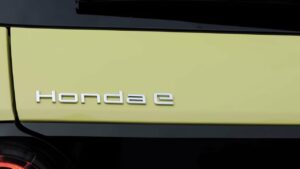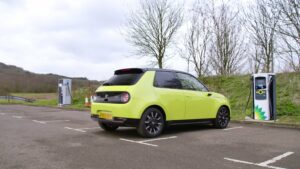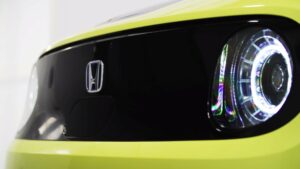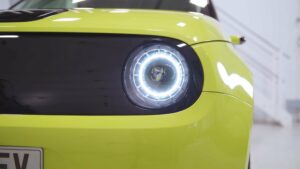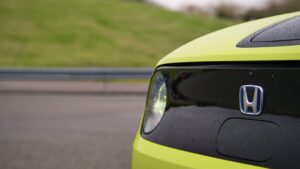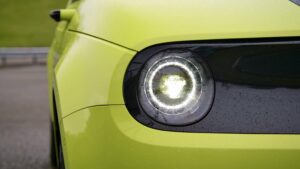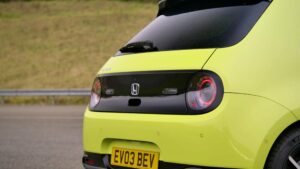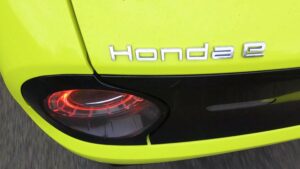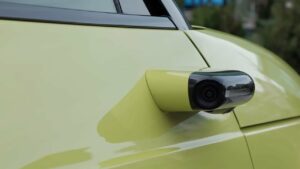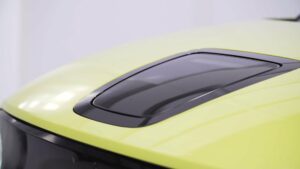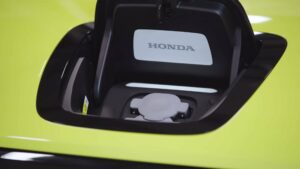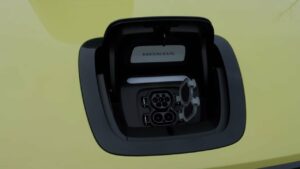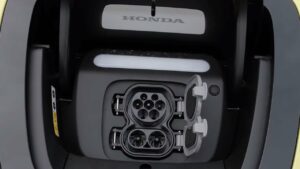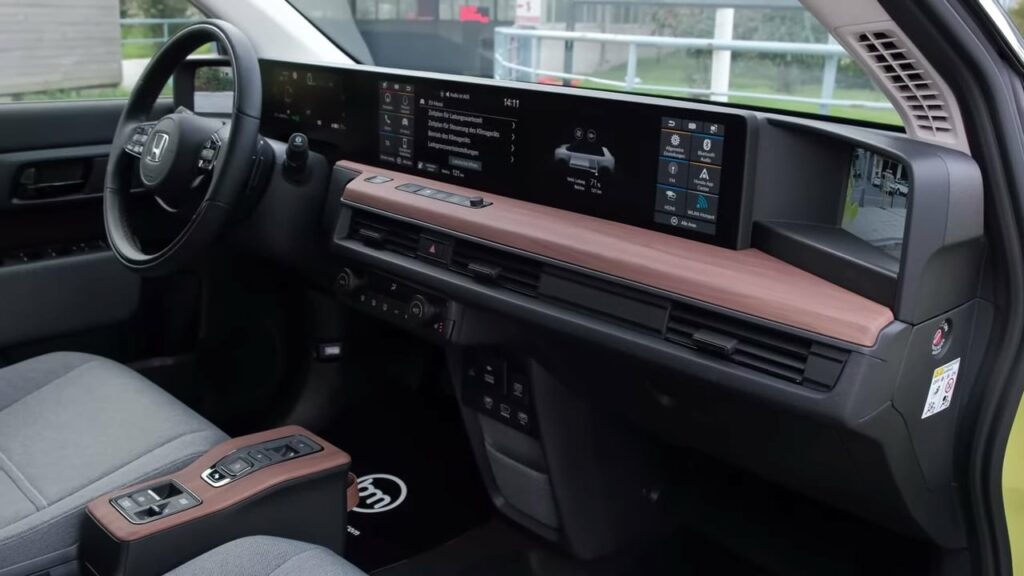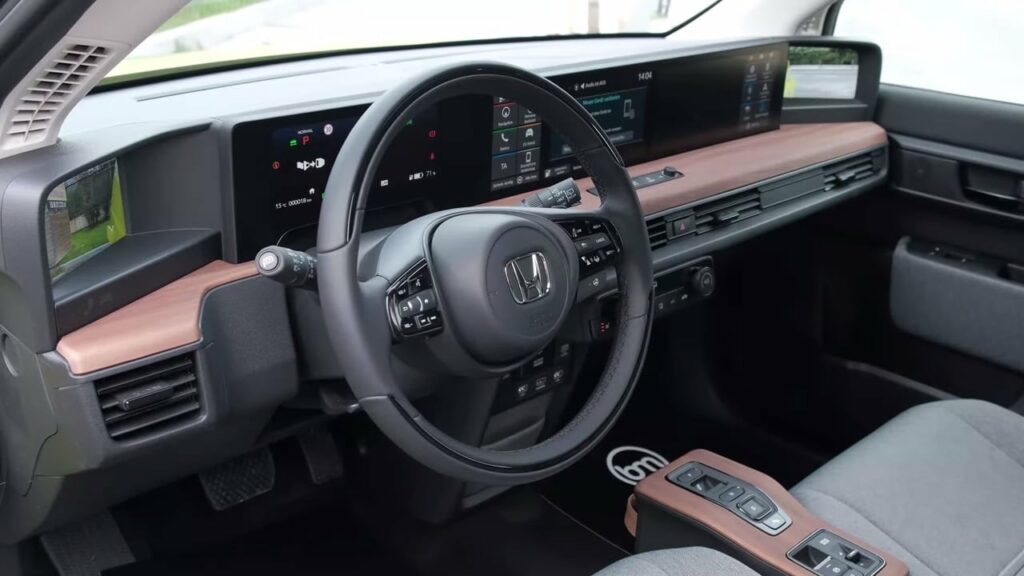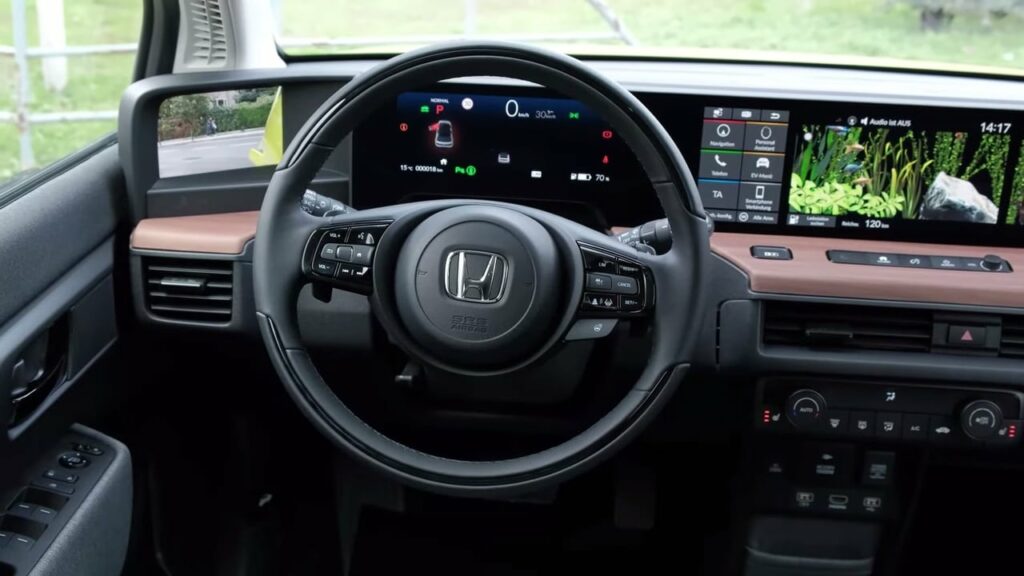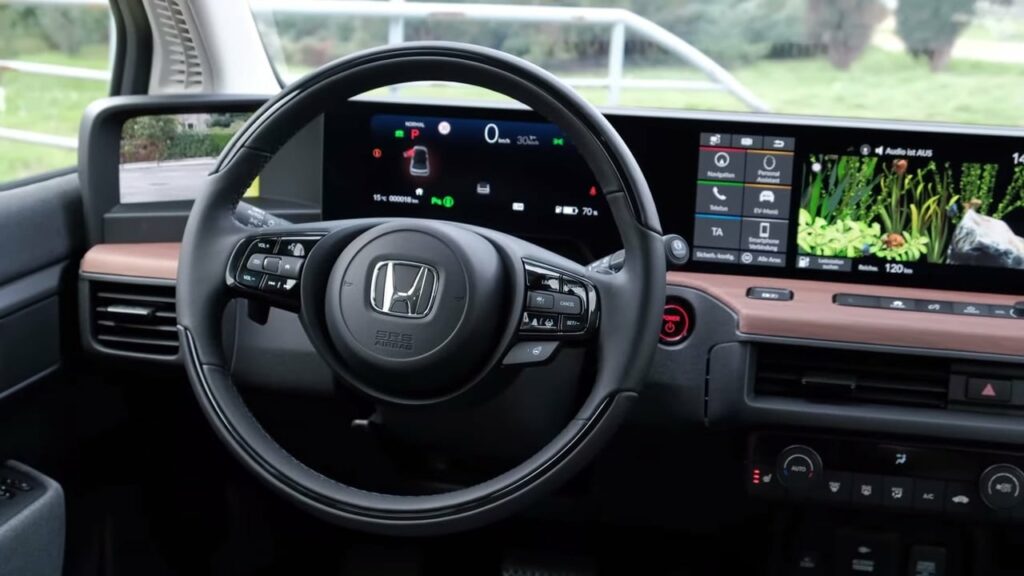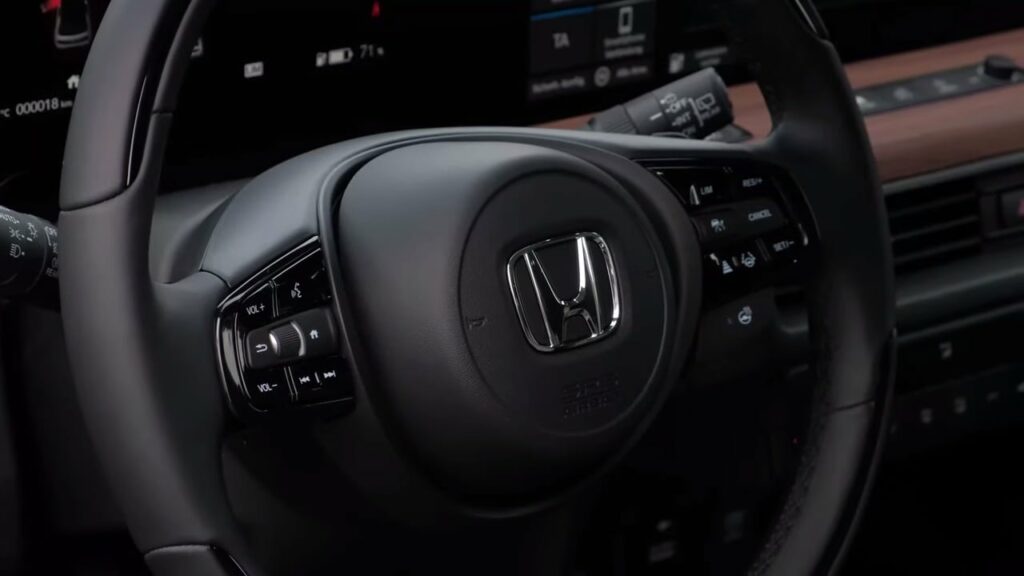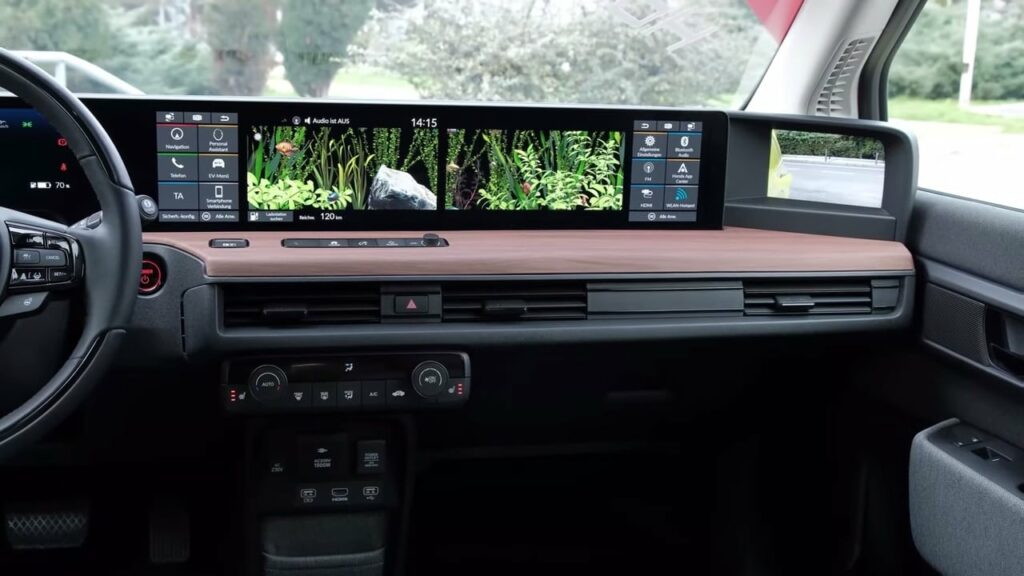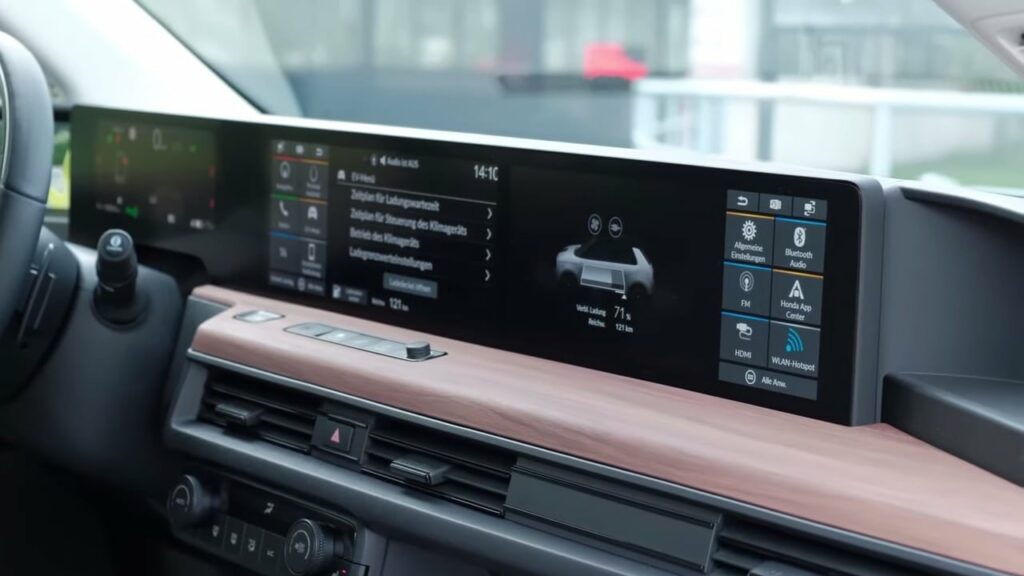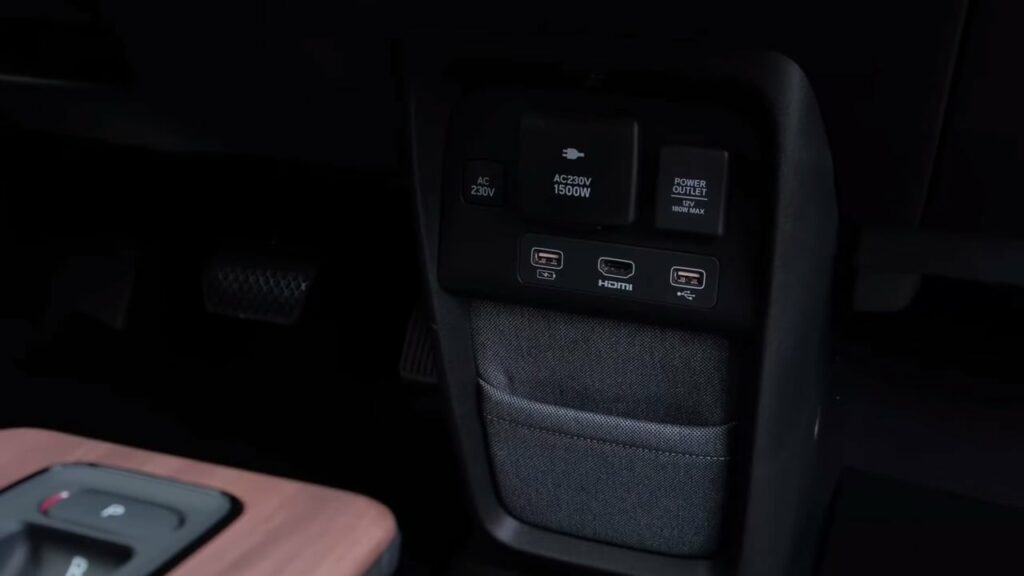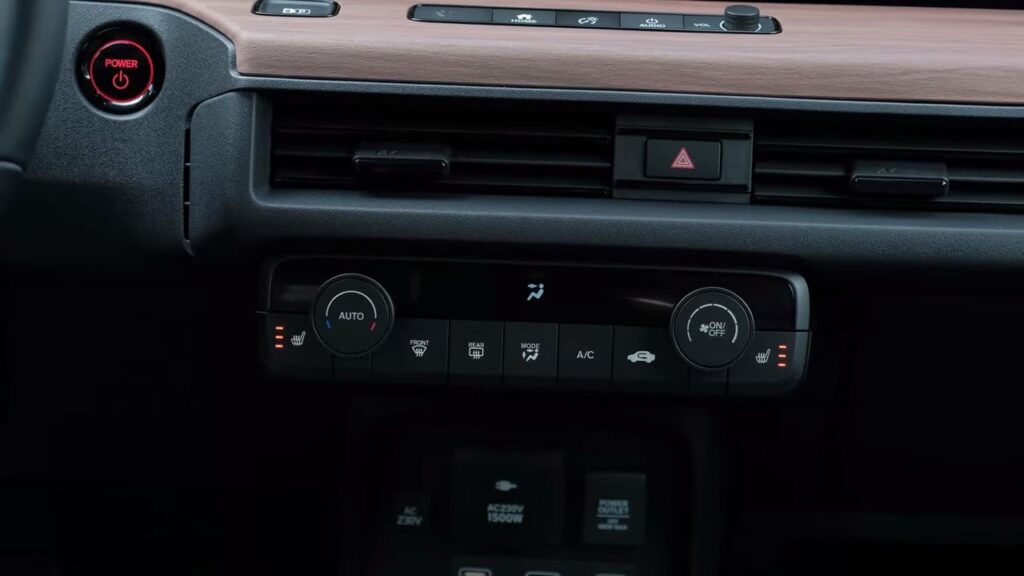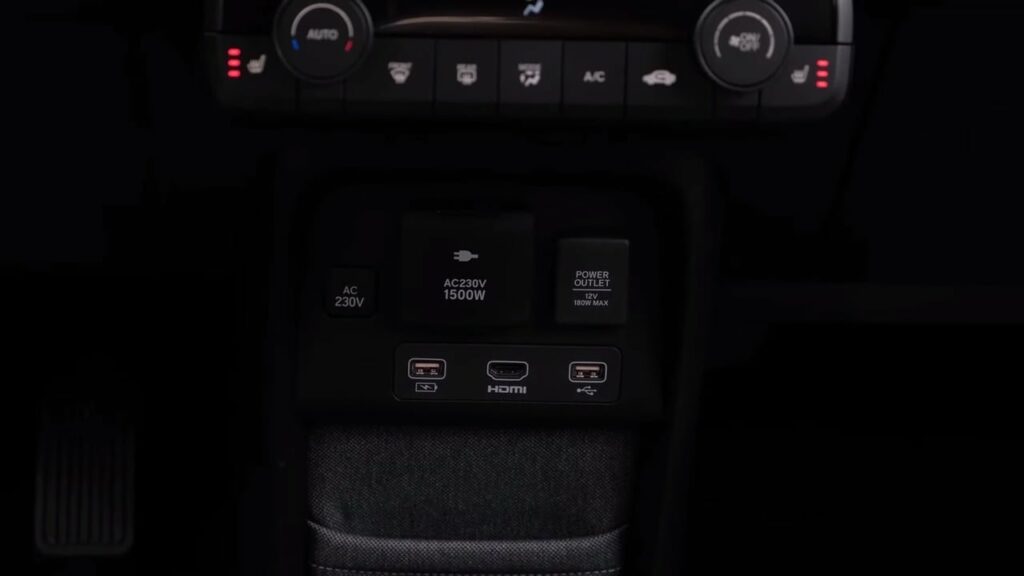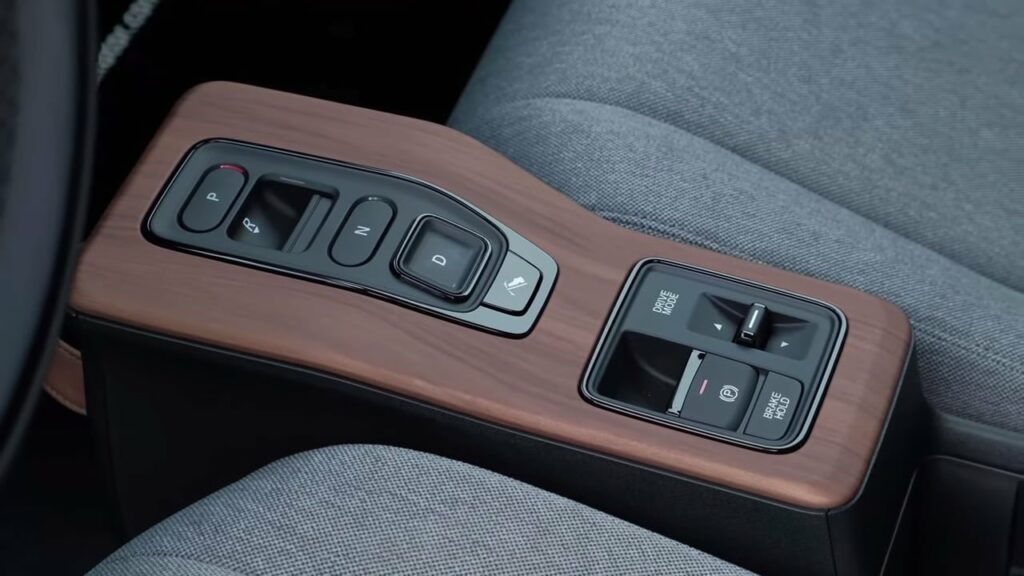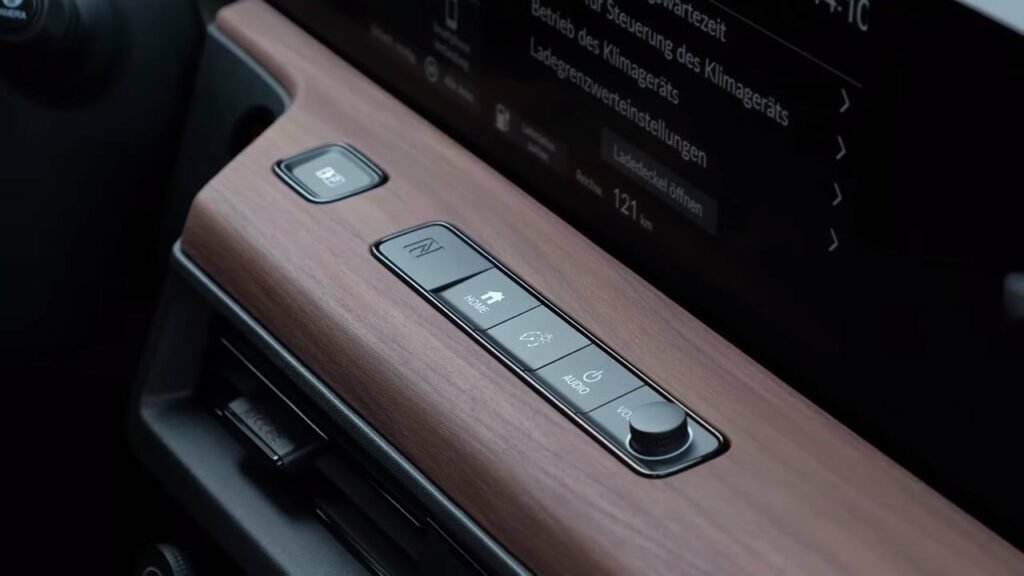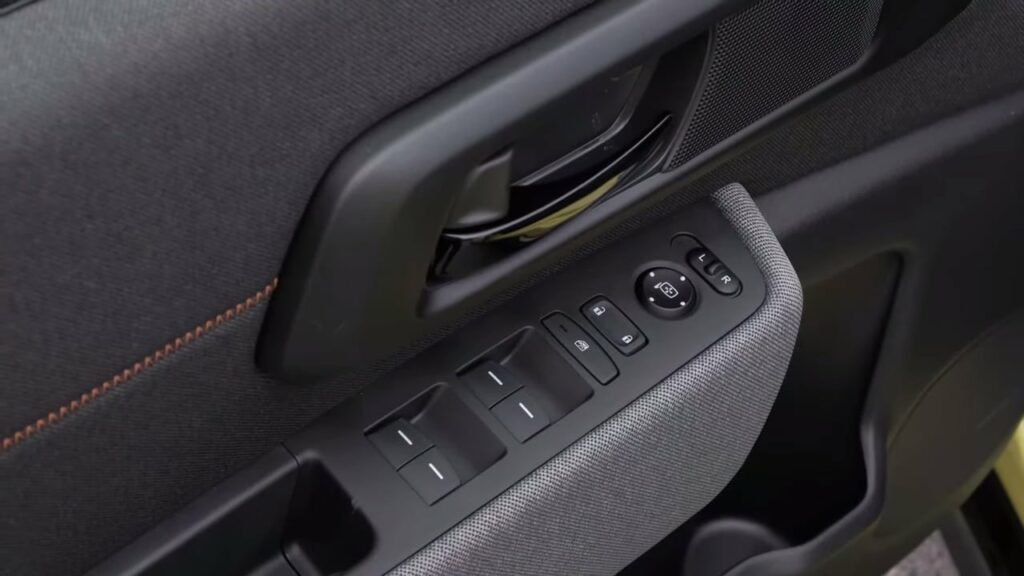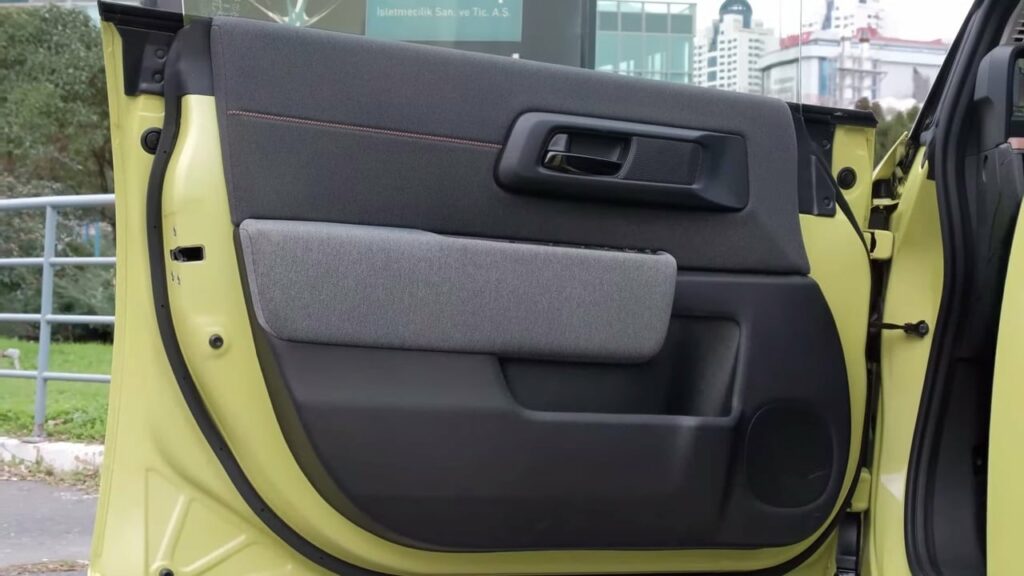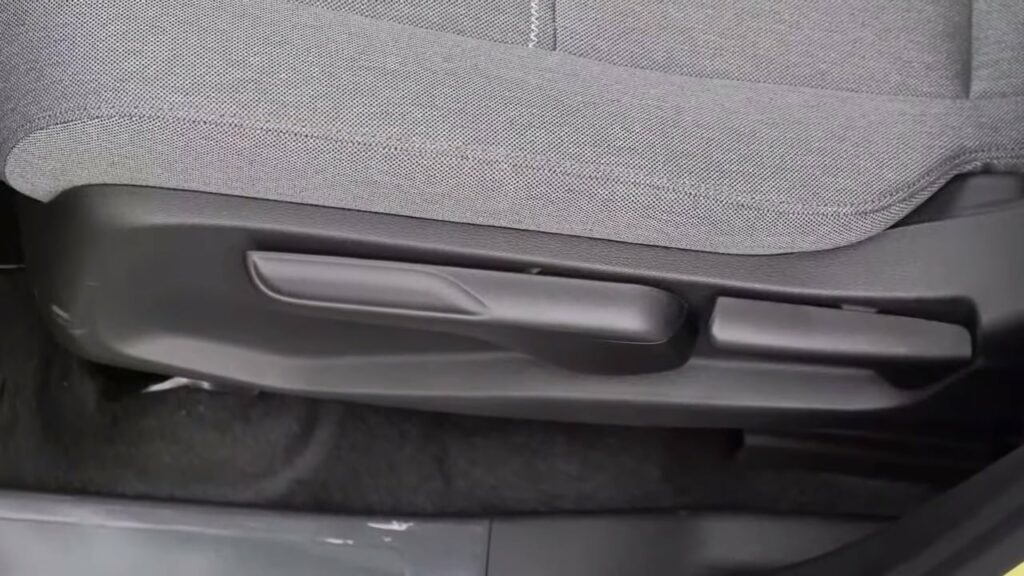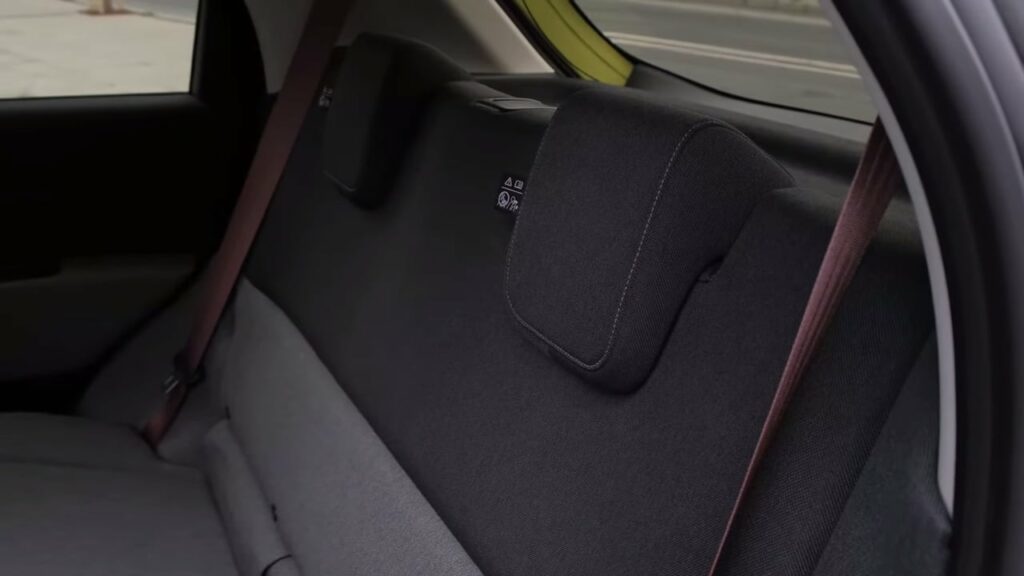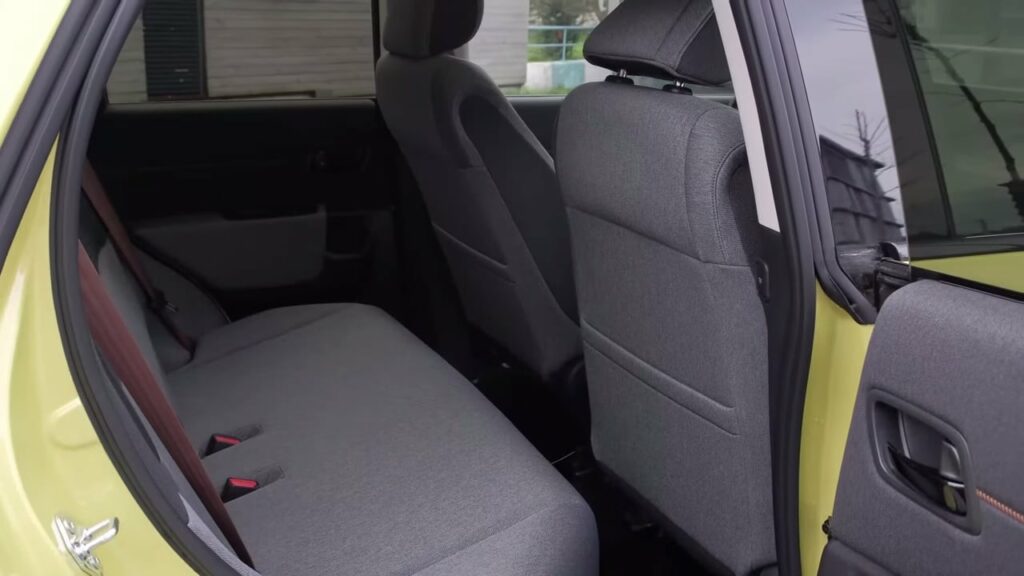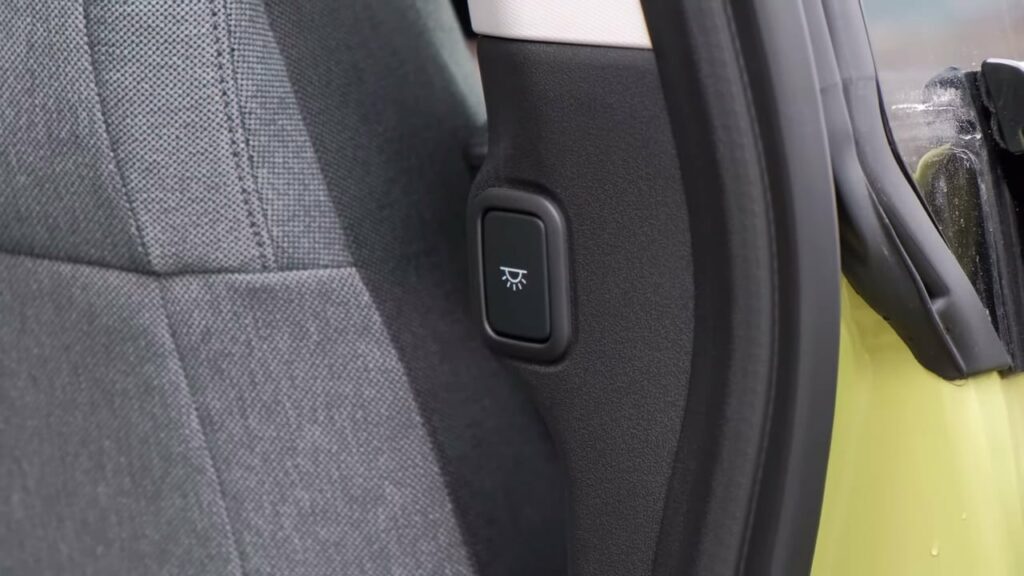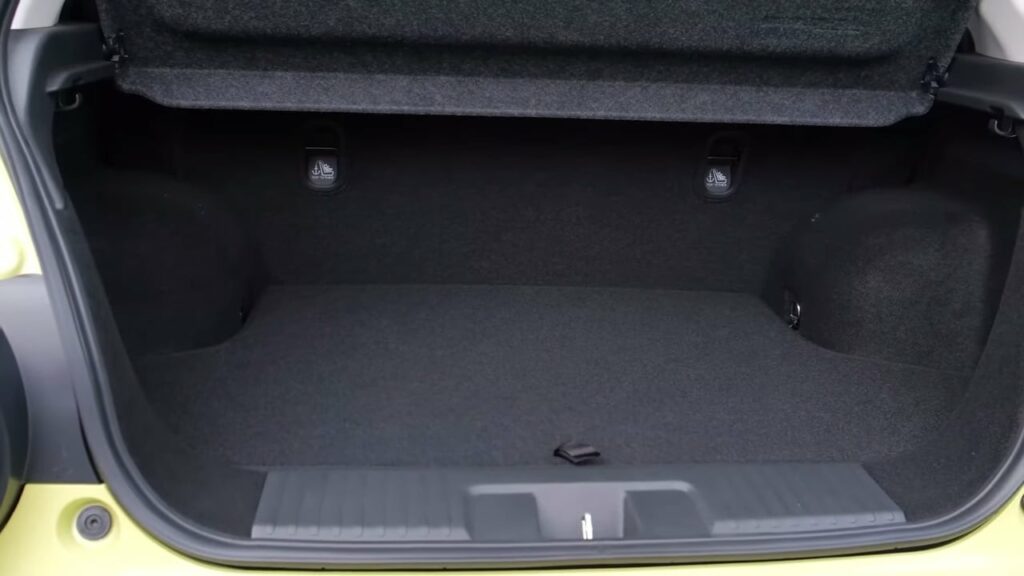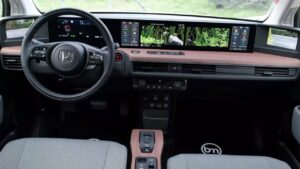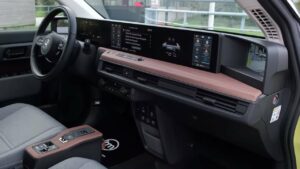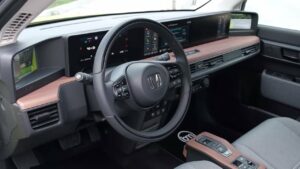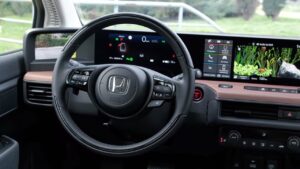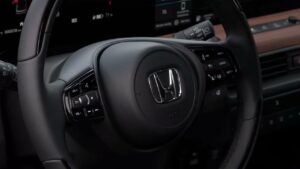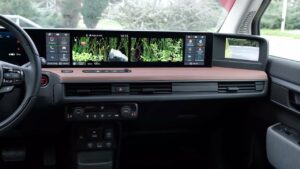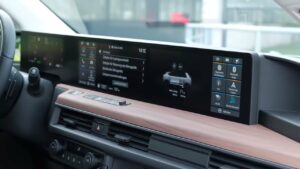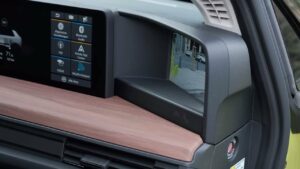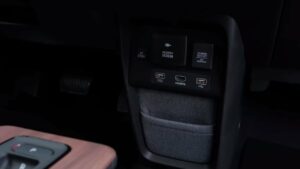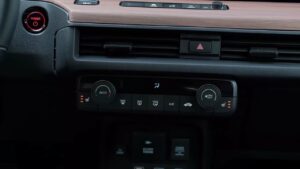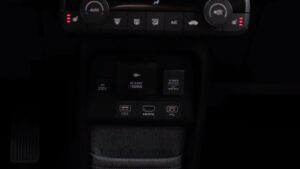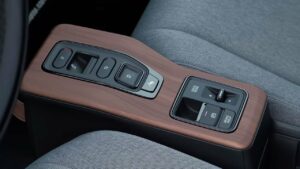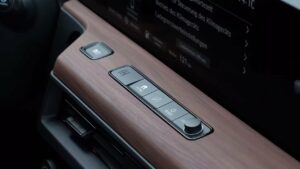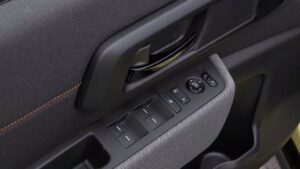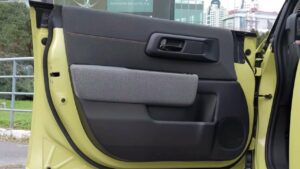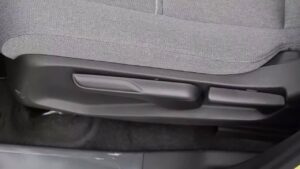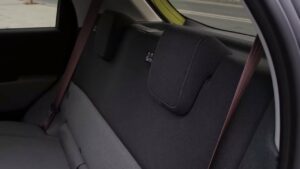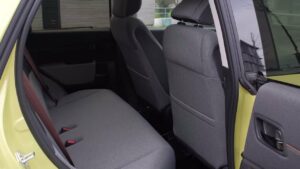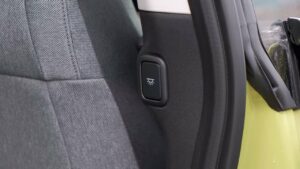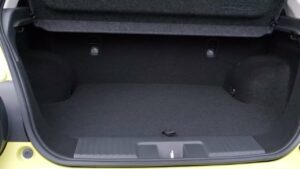Honda e Advance
The Honda e is the Japanese brand’s first all-electric car designed from the ground up in the compact city hatchback class. The car offers its owners absolutely environmentally friendly mobility, a confident range for daily use in the city, and high technology equipment with full compatibility with mobile gadgets.
The Honda e electric car is built on a completely new platform created specifically for electric drivetrain vehicles and is powered by a 110 kW (150 hp) electric motor with 300 N⋅m of torque and rear-wheel drive.
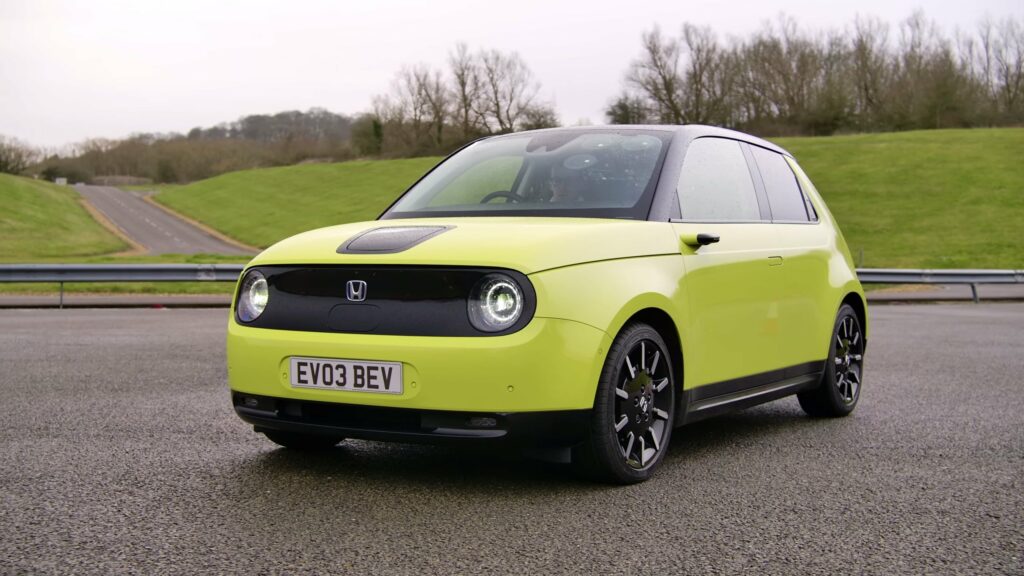
The Honda e battery pack features a liquid-cooled 35.5 kW⋅h lithium-ion battery located in the floor of the car and provides a low center of gravity, due to which the electric car has the correct 50:50 weight distribution, which positively affects the handling of the compact car.
The electric car’s battery provides a range of 200 km on the WLTP cycle, and it can be charged using either the Type 2 AC plug or the 100 kW CCS Combo 2 fast DC charger, which provides a charge of up to 80% in 30 minutes. The Honda e charging port is located in the hood of the electric car, is easily accessible, and offers a light indication of charge status.
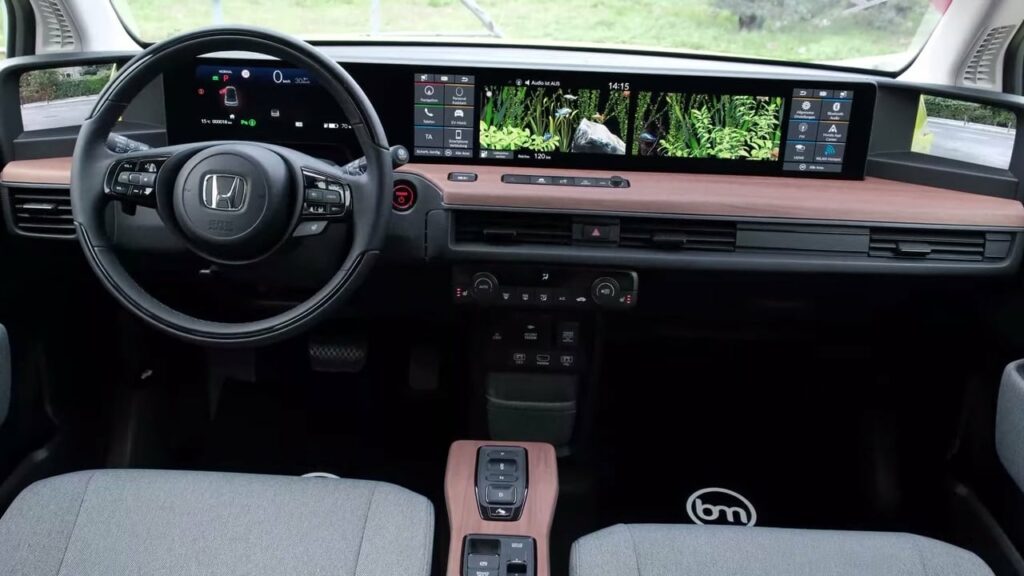
The Honda e has a uniquely unique design a compact hatchback with a 5-door design. The exterior of the electric car can be called proportional with elements close in style. In particular, the front and rear optics are almost identical in their performance and are equally separated by a black plastic insert.
There are essentially no classic door handles in the Honda e, the rear handles are built directly into the body, the front handles are automatically pulled out of the doors, and cameras are offered instead of side mirrors.
The car is extremely compact, with a turning radius of only 4.3 meters, making it extremely maneuverable in busy city traffic.
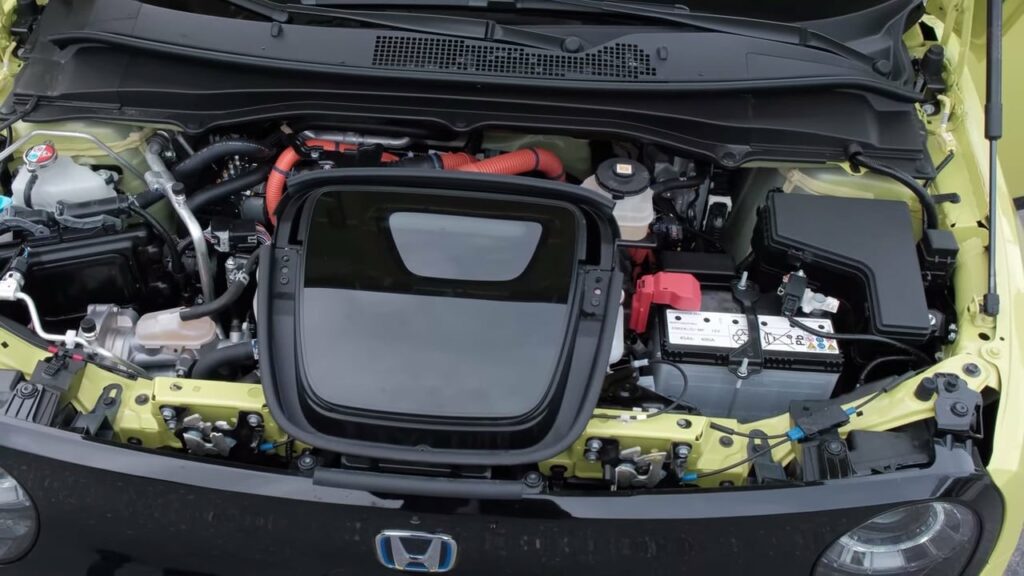
Inside, the Honda e offers a combination of a practical interior with high-tech equipment. The trim materials cannot be called premium, but they are very good, quality finishes and assembled. The car is small and adapted to use in an urban environment, so it is hard to claim good practicality. Inside there is room for no more than 4 people, but in general, the electric car is made primarily for the driver.
It is for him that Honda offers the most comfort by surrounding it with an innovative digital dashboard, two 12.3-inch high-resolution screens and 2 displays of side camera mirrors. Everything is digitized and offers exclusively touch-screen controls. The two-spoke multi-steering wheel is comfortable to grip and does not interfere with the dashboard view at all.
Honda e is a new electric car with technology at its core. A multitude of touch-screen displays offers a variety of modern technological features. The multimedia system supports the connection of mobile gadgets for iOS and Android with the ability to browse social networks, listen to music, use the Internet, and navigation on a wide screen.
To remotely control the electric car offers a mobile application that allows you to monitor charging, control the climate system, as well as perform the function of the digital key.
In addition, Honda e offers its owners an artificial intelligence system capable of performing various voice commands of the driver and giving various recommendations while driving.
| Performance | |
| Acceleration 0 – 100 km/h | 8.3 sec |
| Top Speed | 145 km/h |
| Electric Range | 170 km |
| Total Power | 113 kW (154 PS) |
| Total Torque | 315 Nm |
| Drive | Rear |
| Battery and Charging | |
| Battery Capacity | 35.5 kWh |
| Battery Useable* | 28.5 kWh |
| Europe | |
| Charge Port | Type 2 |
| Port Location | Front – Middle |
| Charge Power | 6.6 kW AC |
| Charge Time (0->170 km) | 5h15m |
| Charge Speed | 33 km/h |
| Fastcharge Port | CCS |
| FC Port Location | Front – Middle |
| Fastcharge Power (max) | 56 kW DC |
| Fastcharge Time (17->136 km) | 36 min |
| Fastcharge Speed | 190 km/h |
| Energy Consumption | |
| EVDB Real Range | |
| Range | 170 km |
| Vehicle Consumption | 168 Wh/km |
| CO2 Emissions | 0 g/km |
| Vehicle Fuel Equivalent | 1.9 l/100km |
| WLTP Ratings | |
| Range | 222 km |
| Rated Consumption | 172 Wh/km |
| Vehicle Consumption | 128 Wh/km |
| CO2 Emissions | 0 g/km |
| Rated Fuel Equivalent | 1.9 l/100km |
| Vehicle Fuel Equivalent | 1.4 l/100km |
|
Rated = official figures as published by manufacturer. Rated consumption and fuel equivalency figures include charging losses.
|
|
|
Vehicle = calculated battery energy consumption used by the vehicle for propulsion and on-board systems.
|
|
| Real Energy Consumption between 112 – 238 Wh/km | |
| City – Cold Weather | 173 Wh/km |
| Highway – Cold Weather | 238 Wh/km |
| Combined – Cold Weather | 204 Wh/km |
| City – Mild Weather | 112 Wh/km |
| Highway – Mild Weather | 184 Wh/km |
| Combined – Mild Weather | 146 Wh/km |
|
Energy use for each trip will vary considerably depending on the driver and the conditions. Therefore, we have provided a range of estimates which can be useful in developing an understanding of the potential benefits of this technology. |
|
| Safety Rating | |
| Adult Occupant | 76% |
| Child Occupant | 82% |
| Rating Year | 2020 |
| Vulnerable Road Users | 62% |
| Safety Assist | 65% |
| Dimensions and Weight | |
| Length | 3894 mm |
| Width | 1752 mm |
| Width with mirrors | No Data |
| Height | 1512 mm |
| Wheelbase | 2538 mm |
| Weight Unladen (EU) | 1595 kg |
| Gross Vehicle Weight (GVWR) | 1870 kg |
| Max. Payload | 350 kg |
| Cargo Volume | 171 L |
| Cargo Volume Max | 861 L |
| Cargo Volume Frunk | No Data |
| Roof Load | 0 kg |
| Tow Hitch Possible | No |
| Towing Weight Unbraked | 0 kg |
| Towing Weight Braked | 0 kg |
| Vertical Load Max | 0 kg |
| Miscellaneous | |
| Seats | 4 people |
| Isofix | Yes, 2 seats |
| Turning Circle | 9.2 m |
| Platform | No Data |
| Car Body | Hatchback |
| Segment | B – Small |
| Roof Rails | No |
| EV Dedicated Platform | No Data |
Home and Destination Charging (0 -> 100%)
A public charging station is required to use the highest possible charging rate. The EVSE/charging station’s charging capacity affects how long it takes to fully charge the battery. The table below shows all possible options for fully charging the Honda e Advance.
In Europe, plugging an electric car into an outlet is often as easy as plugging it into a household outlet, but there are differences from country to country. The table below shows the different ways to charge the Honda e Advance, but in some countries some chargers may not be available.
Type 2 ( IEC 62196)

| Charging Point | Max. Power | Power | Time | Rate |
| Wall Plug (2.3 kW) | 230V / 1x10A | 2.3 kW | 14h45m | 12 km/h |
| 1-phase 16A (3.7 kW) | 230V / 1x16A | 3.7 kW | 9h15m | 18 km/h |
| 1-phase 32A (7.4 kW) | 230V / 1x29A | 6.6 kW | 5h15m | 32 km/h |
| 3-phase 16A (11 kW) | 230V / 1x16A | 3.7 kW | 9h15m | 18 km/h |
| 3-phase 32A (22 kW) | 230V / 1x29A | 6.6 kW | 5h15m | 32 km/h |
Fast Charging (10 -> 80%)
If you want to enjoy driving an electric car, one of the most important features to consider is the number of miles per hour the car can travel while charged. This is called the “range” of the car. All electric cars have a certain range, even if they are 100% charged. This is because they do not have an internal combustion engine to lean on if you need to drive a long distance.
Max. Power: The maximum power provided by the charging point
Avg. Power: The average power provided by the charging point during a session of 10% to 80%.
Time: the time it takes to charge from 10% to 80%
Speed: the average charging rate during the session of 10% to 80%
Combined Charging System (CCS Combo 2)
| Charging Point | Max. Power | Avg. Power | Time | Rate |
| CCS (50 kW DC) | 50 kW | 30 kW | 42 min | 170 km/h |
| CCS (100 kW DC) | 56 kW | 35 kW | 36 min | 190 km/h |
| CCS (150 kW DC) | 56 kW | 35 kW | 36 min | 190 km/h |
| Brand | Honda |
| Model | e Advance |
| Body Style | Hatchback |
| Car Engine | electric |
| Motor power | 113 |
| Maximum Torque, Nm | 315 |
| Battery Energy, kWh | 35.5 |
| Power reserve (NEDC/EPA/WLTP), km | - / - / 170 |
| Level Charging (230/400/DC), hours | - / - / 0.36 |
| Electrical Acceleration, 0-100 km/h (0-62.1 mph) in sec | 8.3 |
| Top Speed, km/h | 145 |

